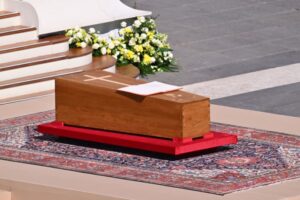AMECEA: SIGNIS Proposes New Dues Structure: President to Catholic Communicators

Sr. Jecinter Antoinette Okoth, FSSA
The President of SIGNIS which is the World Catholic ecclesial movement for professionals in the communication field has informed communicators of the new proposed dues structure to be piloted next year 2025.
In a video clip shared with AMECEA Online Tuesday, December 10, Ms. Helen Osman who has worked in Church communication for over 30 years said, “I am bringing you an important update regarding the dues structure for SIGNIS. This new structure recognizes the great diversity in our membership in our economic situations, the size, and scope of our organizations and associations, and how we can function within SIGNIS.”
Since communicators have relied so much on the generosity of outside groups, especially the donors to the Promulgation of Faith to support communication work, Ms. Osman has disclosed that “This is no longer possible.”
Thus, Ms. Osman who was appointed by Pope Francis in 2022 as one of the consultors to the Dicastery for Communications in the Vatican explains, “It is an opportunity to now reform our organizations so we can become more sustainable and integral to the day-to-day work of our Catholic communicators.”
The new dues structure according to the SIGNIS president, will apply the World Bank system of organizing countries by the gross national income into three ratings: High-income, middle-income income, and low-income.
Additionally, she said in the video clip, “We are providing different rates to episcopal entities that is Diocese and Episcopal conferences versus Associations with independent civil service from the Church such as SIGNIS associations or organizations with management that is distinct from the official Church including religious orders and lay managed organizations.”
Since SIGNIS professionals value the strengths of other organizations, Ms. Osman encouraged individuals and institutions who cannot meet the requirements and membership to join SIGNIS as associates “In full transparency.”
The rationale for the proposed structure encourages participation, provides consistency based on economic realities at the same time, membership is not a transactional expression but an expression of solidarity.
The new structure is expected to be used and experimented in the year 2025, and the assembly delegates are mandated to approve the new structure at the World Congress 2026 to be held in Rwanda based on the 2025 experience.
The work of Catholic communicators has made a difference to so many, which the president says, “When we build on the strength of our network we are able to do so much more. Together we raise up, not only what we are accomplishing in individual organizations, but also what others are doing to further transform our cultures in the light of the gospel.”


